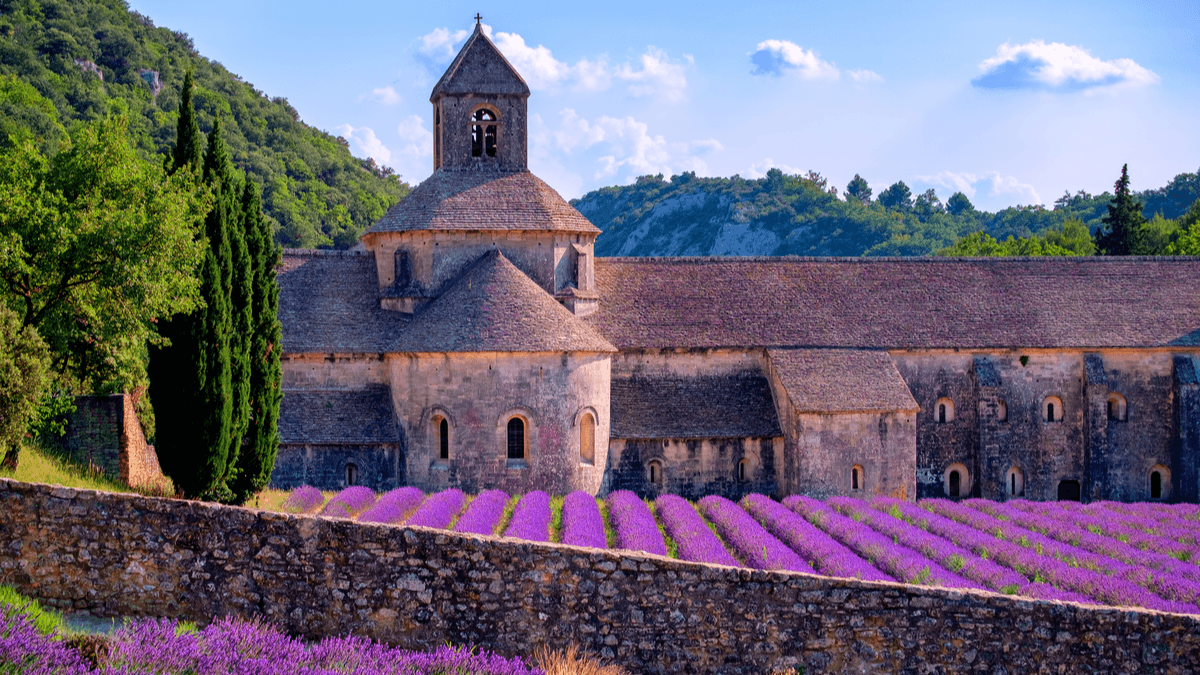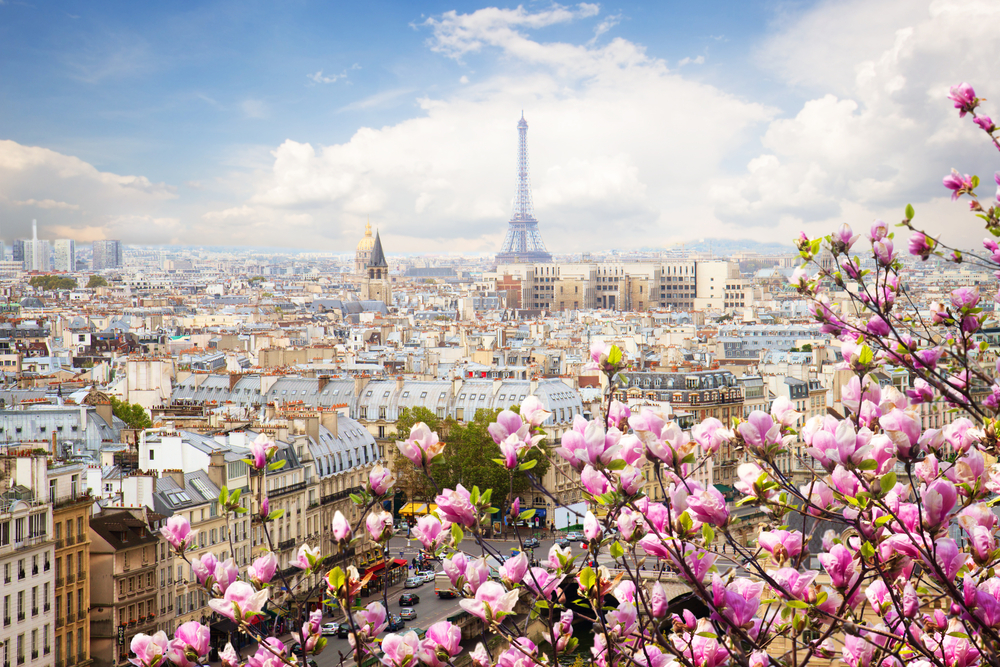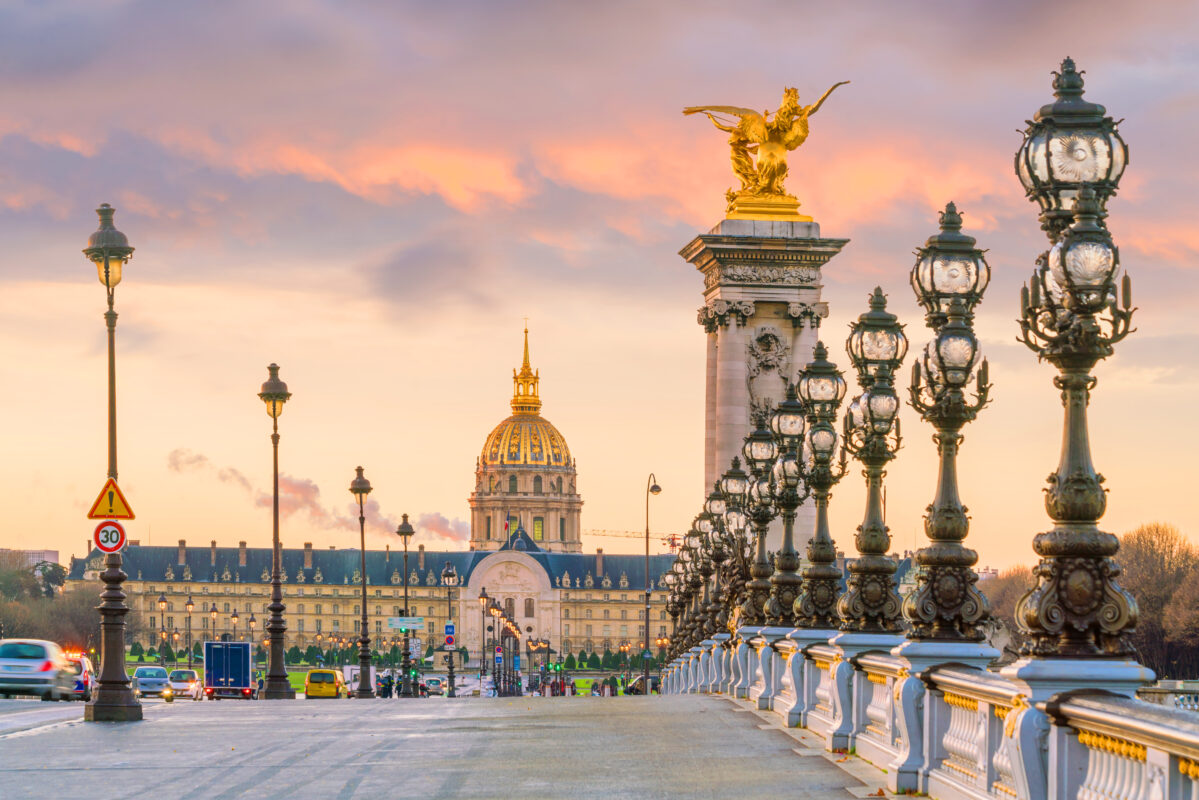When it comes to France, Paris is a real show-stealer. The City of Lights is a major stop on every traveler’s bucket list. But if you want to visit the real France, getting outside of Paris is the first step to see all this vibrant country has for you.
France has everything from small, quaint villages to sublime mountain ranges and balmy Mediterranean beaches. Highly regarded for its history, art, and the finest of dining, France is a dream destination for those who love culture, elegance, and—let’s cut to the chase— wine. What’s more, world-class public transport makes it easy to get around and explore everything France has to offer you beyond its distinguished metropolis.
Let’s take a look at some of France’s most alluring gems outside Paris.
1. Aix-en-Provence:Perfect for wine, sun, and rustic beauty.
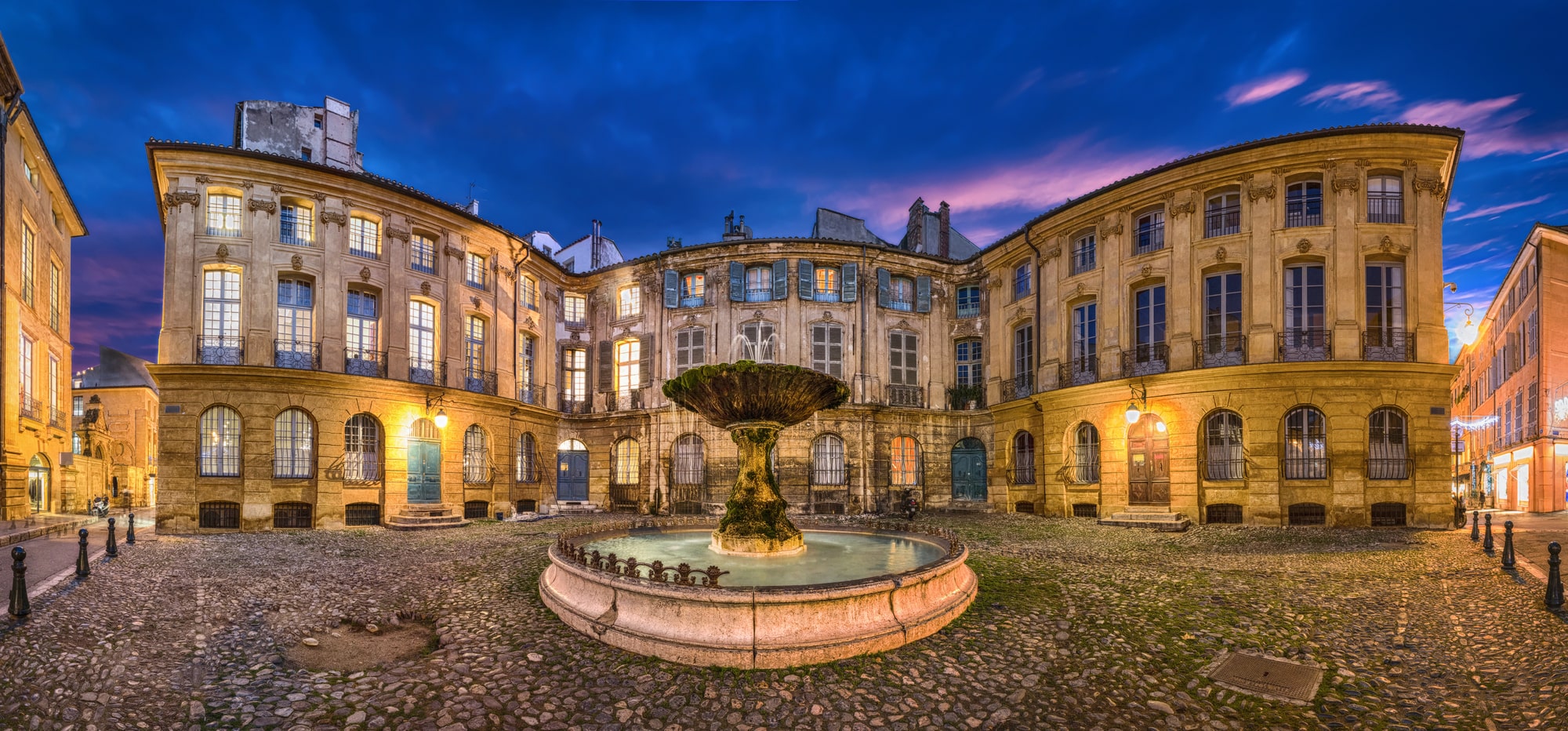
You’ll find Aix-en-Provence in the south of France, a stone’s throw from Marseille and the Mediterranean coast. The TGV high-speed railway makes the region easy to reach from the country’s north, and it’s a journey worth making.
One of the biggest lures of Aix-en-Provence is the many fountains scattered around the town. The most famous is the Fontaine de la Rotonde, located on the Cours Mirabeau, the main avenue which cuts through the town center. On Saturdays, at Place Richelme, you can browse the impressive food market, or easily spend an afternoon tasting the region’s renowned Rosé wines.
A place to relax, cycle around, and drink in the rural ambiance, Aix-en-Provence is the perfect getaway from France’s bigger cities.
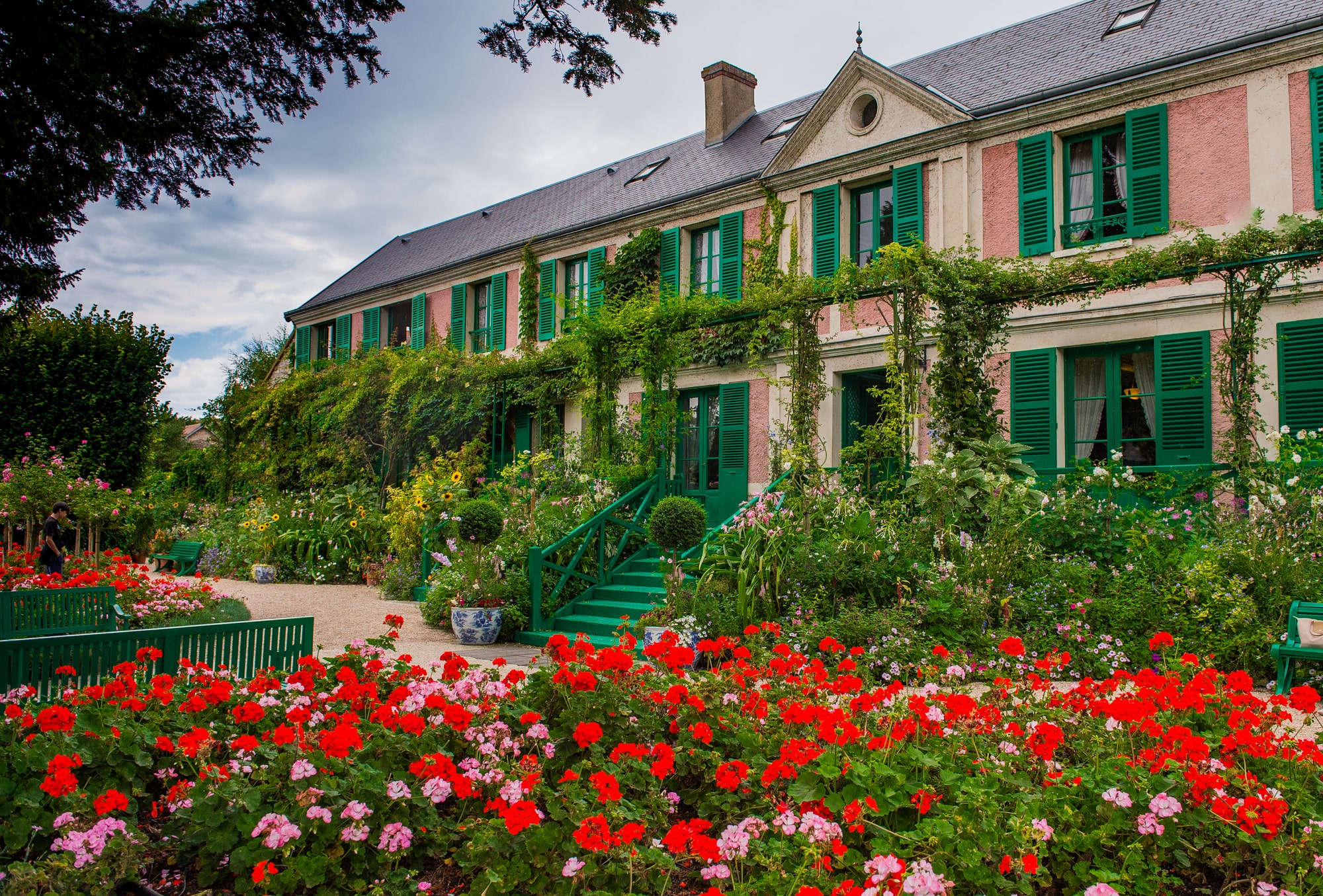
Want to build your own trip to Giverny instead?
Instantly create your own customized trip with our easy to use trip builder
When should you visit Aix-en-Provence?
Aix-en-Provence is enjoyable all year round, but between December and February, it’s the low season when the low prices reflect a lull in activity, and lots of places close.
In contrast, May to August is high season, and you can expect big crowds and prices to match. The best time to visit might be the shoulder seasons, where crowds and prices are smaller, but the weather is still pleasant, and most attractions are open.
Around mid-June to early July, the lavender fields of Provence to the north burst into bloom, filling the countryside with color and fragrance, and are certainly worth a small excursion.
2. Marseilles: Perfect for sea, city, and culture
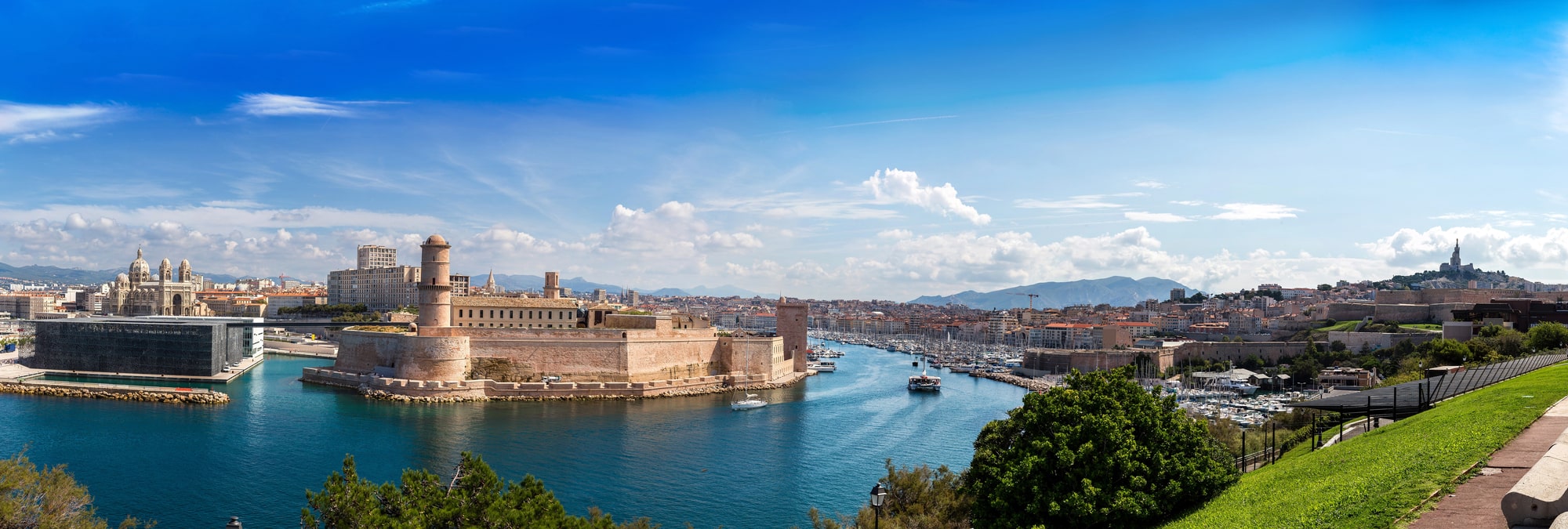
Marseilles is a large port city in the region of Provence-Alpes-Côte d’Azur. Rich in diversity, culture, and history, Marseilles offers a different take on a French city experience and is totally unlike Paris.
The jewel in Marseille’s crown is Le Vieux Port, the Old Harbor, the perfect place for an evening stroll. Perhaps you’ll stop for dinner? Marseilles is famous for bouillabaisse; a hearty fish stew served with grilled bread and mayonnaise. Do we need to add the stew is best when washed down with one of the region’s breezy white wines?
While in Marseilles, you must visit Basilique Notre Dame de la Garde, a large church looking over the city, not to mention Marseille’s Cathedral, the very grand Cathédrale Sainte-Marie-Majeure de Marseille. The highly-rated Museum of European and Mediterranean Civilisations is another excellent way to spend a few hours and will enrich your appreciation of Mediterranean culture.
If you find yourself growing tired of big city life, a short trip outside the city will take you to the Calanques. These fjord-like natural structures between Marseilles and La Ciotat are a popular sports climbing area and offer breathtaking scenery.
When should you visit Marseilles?
The peak season for Marseilles is between May and August, and it’ll be hot, busy, and expensive. A better time to schedule your trip is between September and November.
3. Avignon: Perfect for medieval architecture.

When Italy’s Popes fled the corruption of Rome in the 14th Century, Avignon is the city they made their home. Today you can see their legacy: the astounding Palais des Papes, or Popes’ Palace.
This an enormous Gothic structure, imposing in both looks and significance, is well worth spending an afternoon exploring. It’s not the only piece of ancient architecture in Avignon, with the Le Pont Saint-Bénezet, a ruined medieval bridge, also drawing its fair share of attention.
In fact, Avignon’s historical center itself is a UNESCO World Heritage site and a great place to connect with a bygone world.
When should you visit Avignon?
The best times to visit Avignon are early summer and early fall. At these times, you’ll experience ideal weather without the oppressive crowds of July and August.
4. Chantilly: Perfect for horses and elegance.
Located just a short train ride from Paris, Chantilly is about as far removed from the chaos of the capital as you could imagine.
The main draw of the town is the Château de Chantilly, one of France’s most lavish, prestigious châteaux. While stunningly beautiful in its own right, it’s also home to an art museum, the glorious Musée Condé.
Chantilly has more to offer, though. The Living Museum of the Horse is one of the most unique museums you can visit in France. Set in an 18th-century palace stable fit for a prince, here you can watch horse displays and spend time with these majestic animals.
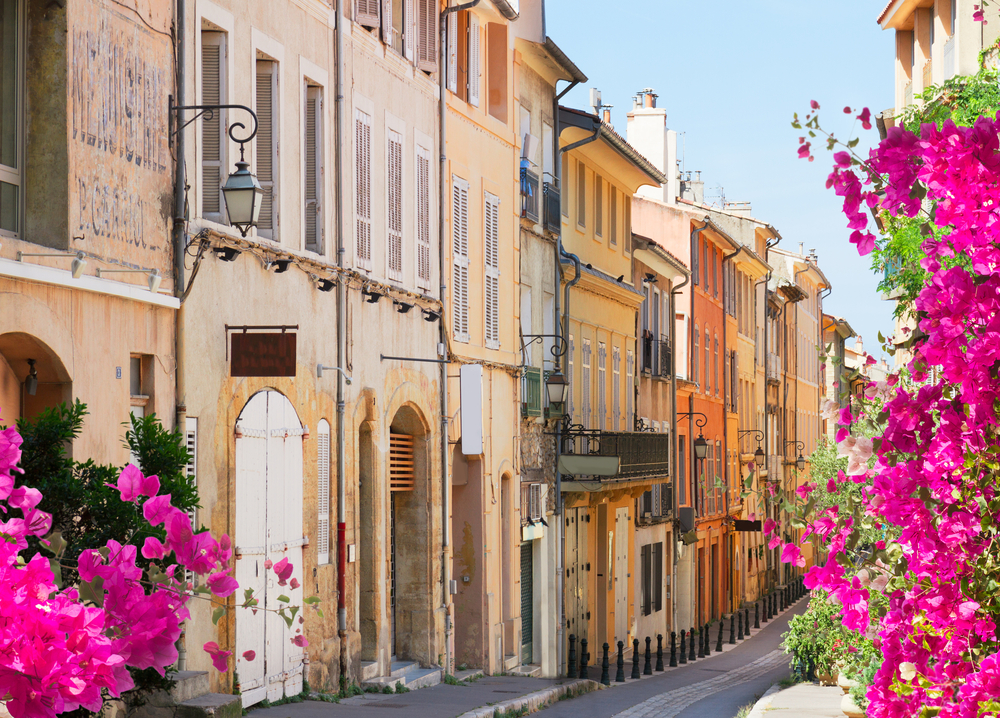
Want to build your own trip to Aix-en-Provence instead?
Instantly create your own customized trip with our easy to use trip builder
When should you visit Chantilly?
Chantilly tends to draw tourists year round and the only time you can be sure of low numbers is midwinter. We recommend braving the busier spring and summer months to enjoy the beauty of the town in good weather.
5. Giverny: Perfect for flowers and art

80km west of Paris, in the region of Normandy, Giverny is a small village that epitomizes the French countryside. Its main attraction is the house of renowned French painter Claude Monet.
If you’re familiar with Monet’s paintings, you’ll be aware of his love of color, flowers, and light. Giverny has all three in abundance. Beautiful gardens, a blue tiled kitchen, and Japanese art make the house an enchanting place to visit.
The town of Giverny itself has a lot to offer. There’s the Natural Mechanical Museum, home to an impressive collection of steam internal combustion engines from years gone by. When you’ve exhausted the Giverny’s well of artistic and scientific wonders, there are some pretty hiking trails around the village waiting for you to explore.
When should you visit Giverny?
Although Monet’s house can get very busy during the high season, it closes from November to March, which makes this the only real option. We recommend early summer and early fall to avoid the worst of the chaos and still catch the blossoms.
6. Rennes: Perfect for exploring the Breton countryside
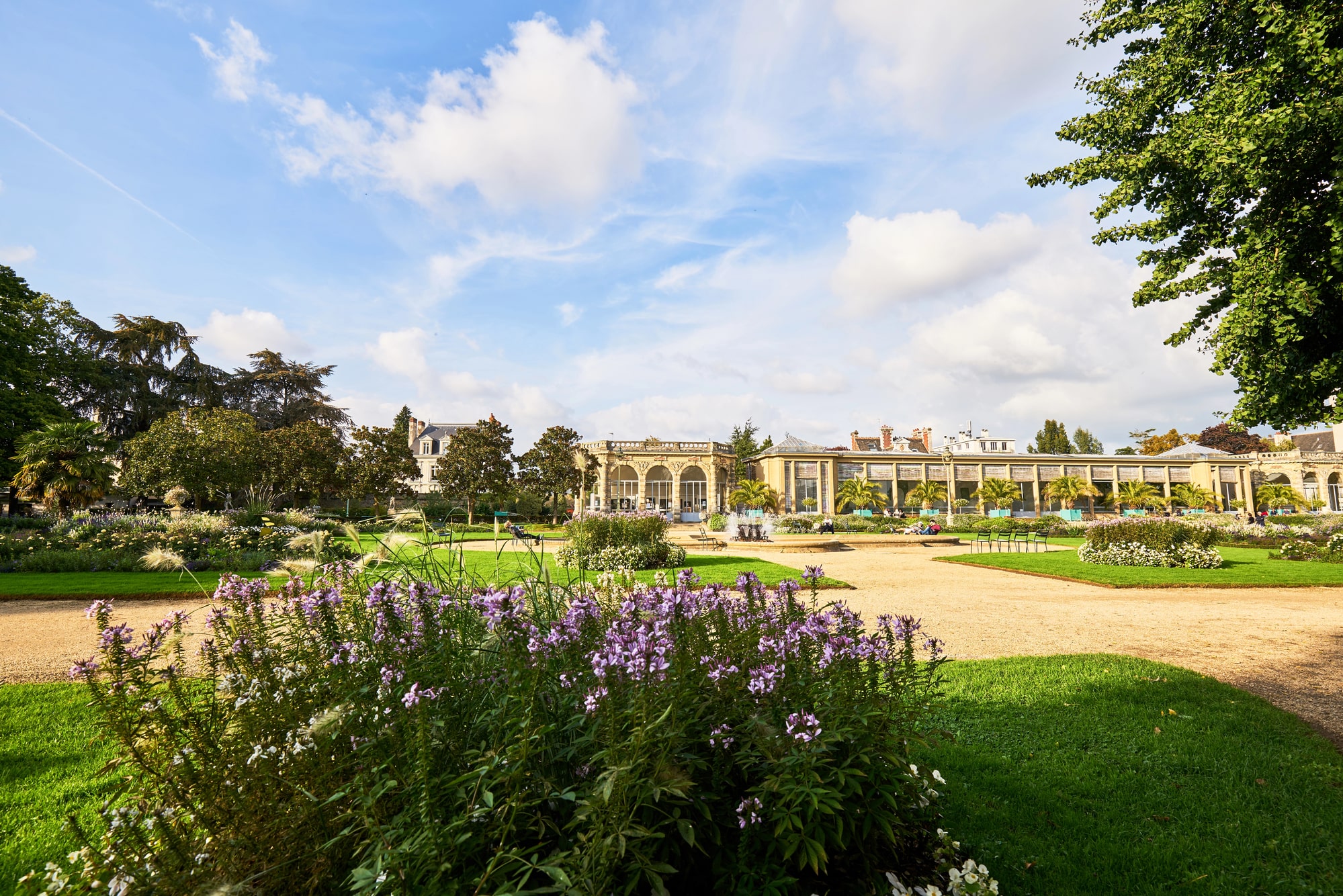
Rennes is the capital city of Brittany, a region in France with a very unique atmosphere. The people here descend from Celtic cultures, and even the local language, Breton, varies from standard French.
Architecture around Brittany is especially interesting and quirky. You’ll see stone cottages that appear more like something from the island of Britain, and well-preserved Colombages, wood-framed houses that are hundreds of years old.
Rennes itself is a small, ideal city to experience life like a local. You can easily pass an afternoon in Rennes at a sidewalk cafe, feasting on a crêpe pancake, and sipping a cider. If you care to do a little wandering, the city’s Parc du Thabor features exotic trees, birds, and plant life. Or, Les Champs Libres is a fascinating cultural center, home to the Library of Rennes Métropole, the Museum of Brittany, the Espace des sciences, and the Cantine Numérique Rennaise.
Your visit to Rennes is an excellent opportunity to explore the surrounding countryside. Particularly worthy of a visit is the Mont-Saint-Michel, an impressive monastery on a rocky island that dates back more than a thousand years. Dinan, a rustic medieval town known for its rampart walls, might be one of the most beautiful places to visit in France.
When should you visit Rennes?
Rennes comes into its own in spring and summer. Visitor numbers are steadily busy throughout the year, although never as hectic as Paris. July is by far the most crowded month, with shoulder seasons relatively peaceful.
7. Bayeux: Perfect for getting up close to history
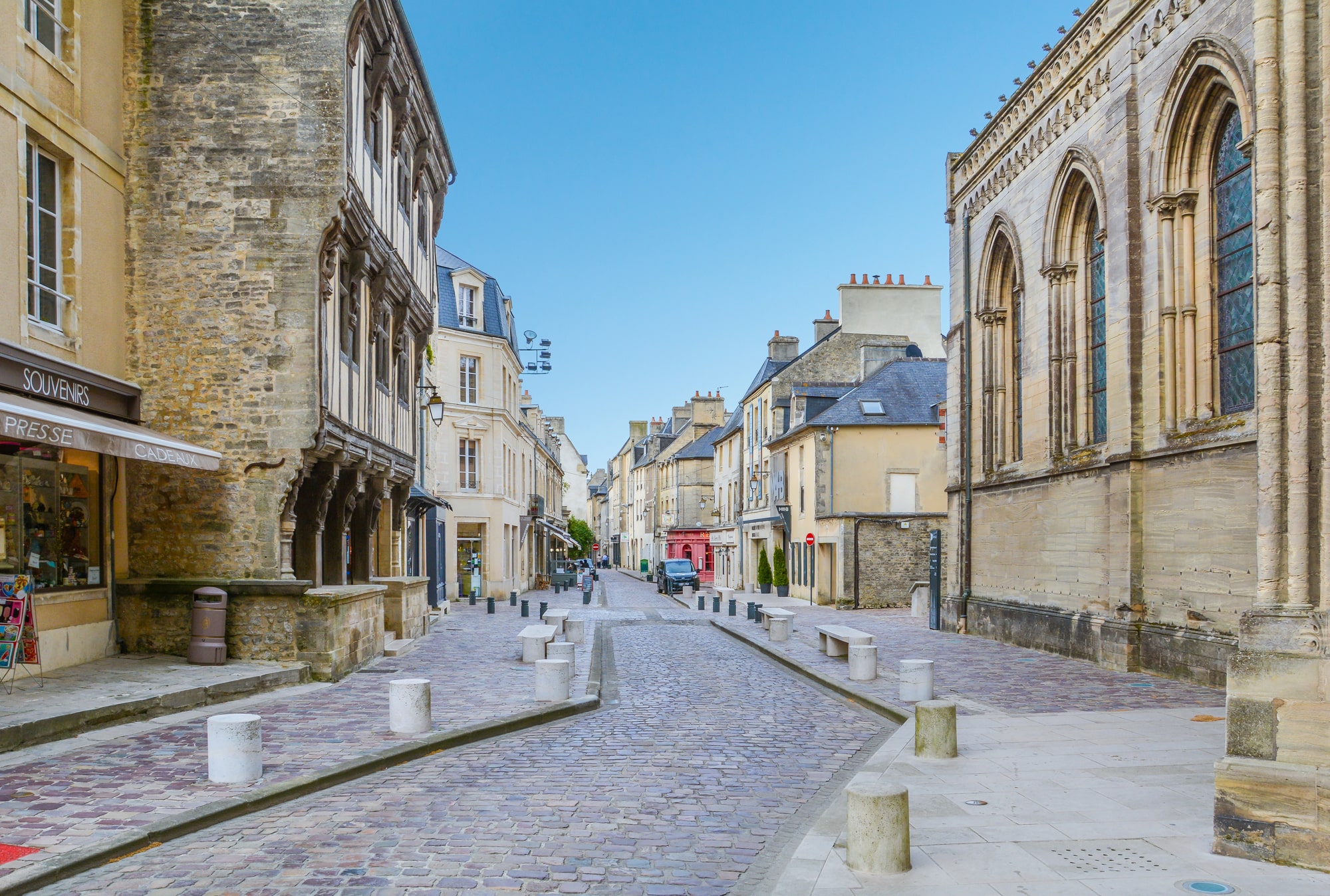
Located in Lower Normandy, Bayeux’s main attraction is the 1000-year old Bayeux Tapestry. Depicting the conquest of England by William of Normandy in 1066, the tapestry is nearly 70 meters long and boasts a stunning level of detail. This incredibly significant piece of history can be found in the Centre Guillaume le Conquérant for a small entry fee.
The Bayeux Tapestry isn’t the only piece of history in the town, though. Bayeux also played a crucial role in World War II, as the D-Day landings took place nearby, and Bayeux was the first town to be liberated in 1944. A tour of these beaches can help bring you in contact with that time and is a poignant reminder of this region’s bloody past. You can pay your respects to the Allies who served at the area’s Commonwealth and American war cemeteries.
When should you visit Bayeux?
Winters in Normandy can be cruel, and March often sees a blanket of snow descend on Bayeux, although winter brings opportunities for skiing nearby. The best time to visit for tourists is between May and October, with July being the busiest month.
8. Cherbourg: Perfect for reflecting on the past
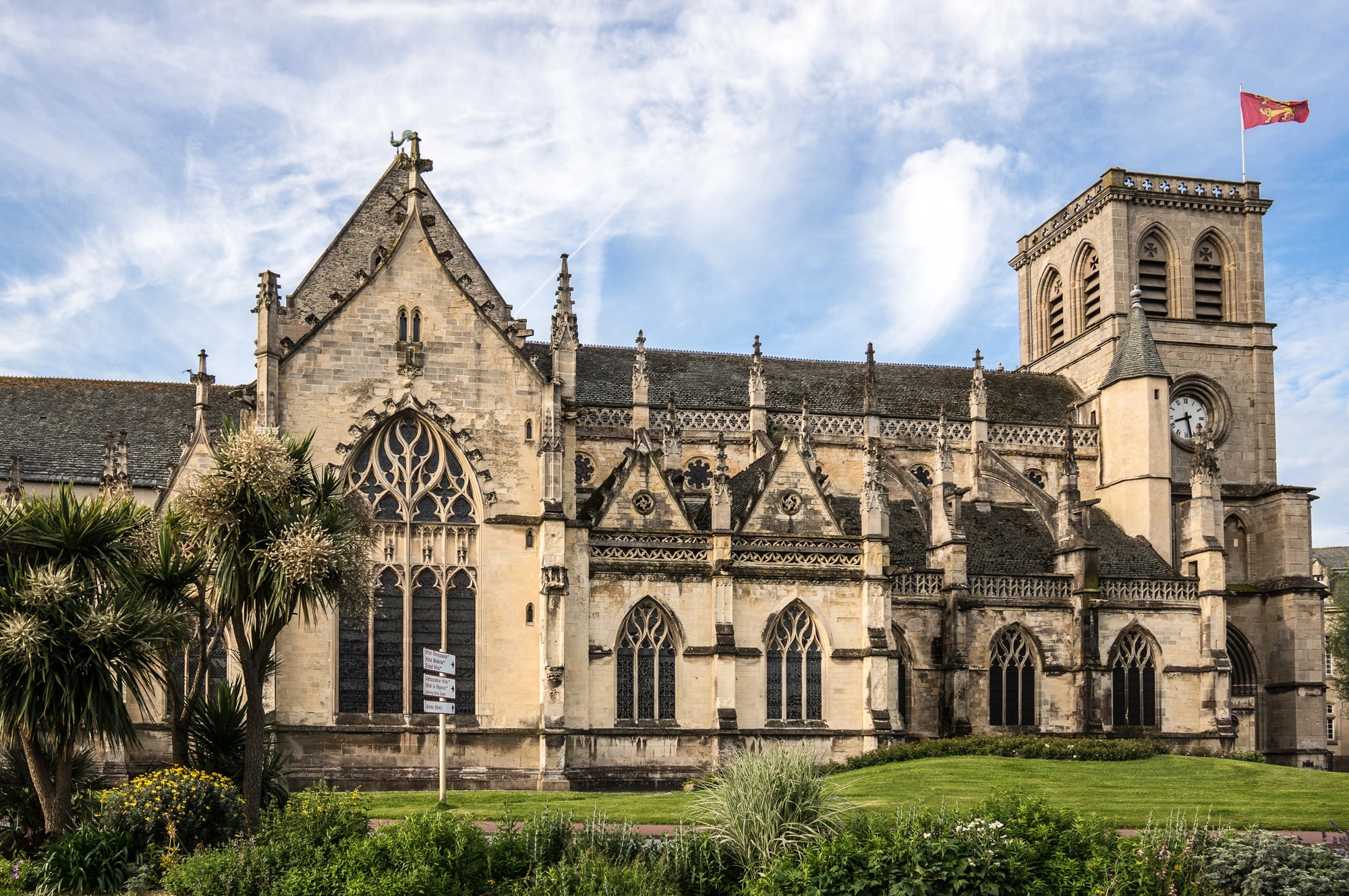
Cherbourg is a port town, not far from the beaches where the Allies carried out their D-Day landings in the summer of 1944.
Today, the town is home to several memorials to this event. The Musée de la Libération is a hilltop 19th Century fortress which now serves as a museum based around the events of the D-Day landing and the Battle of Normandy. After you view the museum, stepping outside to see the coastline beyond brings a new appreciation for those who lost their lives to liberate France.
For a more lighthearted few hours, the Cité de la Mer is a family-friendly maritime museum where you can visit a submarine and learn about the history of humans under the sea. There is also an exhibition devoted to the ill-fated voyage of the S.S. Titanic, which stopped in Cherbourg before it embarked across the Atlantic,
When should you visit Cherbourg?
The best time to visit Cherbourg is summer, but it can be busy, especially the D-Day beaches, which attract enormous crowds.
France has something to offer everyone. While Paris is certainly worth a few days or more, there’s plenty more to this country, and it’s worth getting out of the capital even if it’s only for a short trip.
Get the most out of your trip to France with a customized itinerary from Go Real Travel. Plan your trip to Aix-en-Provence, Bayeux, and Rennes.

